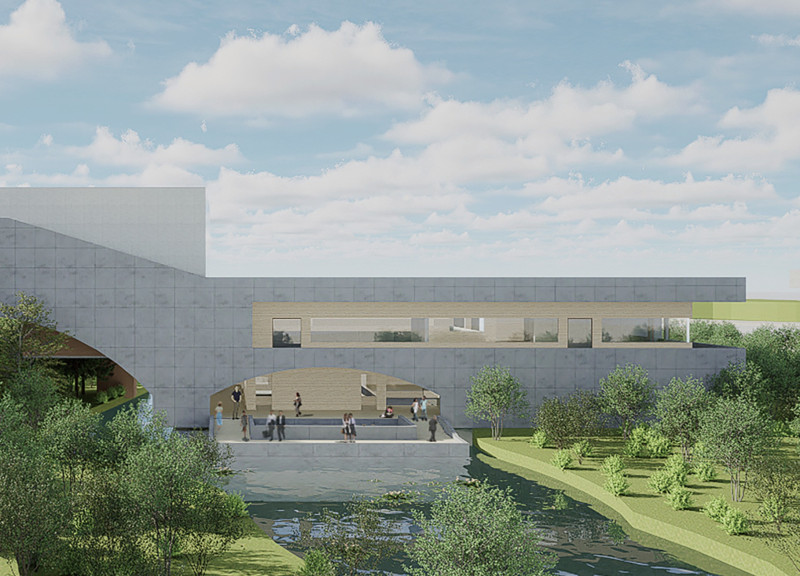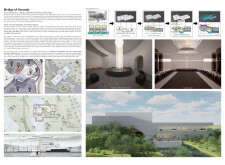5 key facts about this project
### Project Overview
Located in the Dong ethnic region of China, the project draws inspiration from the Wind and Rain Bridge, a culturally significant structure known for its communal role. The design aims to cultivate an environment that promotes tranquility and connection among users while seamlessly integrating into the surrounding landscape. This integration highlights the spiritual and community-oriented aspects of architecture in this context.
### Spatial Organization
The layout emphasizes meditation and reflection through a carefully considered arrangement of spaces. Key features include:
- **Underwater Meditation Space**: This area is designed to immerse visitors in a calming aquatic environment, utilizing water to create a serene atmosphere that fosters introspection and relaxation. The strategic placement within the landscape allows for both literal and metaphorical depth.
- **Light Chapel**: Designed as a gathering space for communal activities, the Light Chapel maximizes natural light to create an uplifting environment conducive to meditation and social interaction. Its design incorporates elements that facilitate engagement among users.
- **Flowing Pathways**: The architectural plan includes whimsical pathways that mimic the contours of the surrounding topography, encouraging exploration and contemplation while promoting a fluid transition between built forms and nature.
### Materiality
The selection of materials reflects a balance between contemporary design and traditional craftsmanship. Notable materials include:
- **Reinforced Concrete**: Utilized for its strength and versatility, enabling the formation of intricate shapes that respond to the project’s spatial requirements.
- **Glass**: Employed in the Light Chapel to enhance transparency, allowing natural light to penetrate the space and provide views of the natural surroundings.
- **Water Features**: Incorporated into the meditation area, water symbolizes serenity and acts as a literal and figurative mirror to the surrounding environment.
- **Natural Stone**: Chosen for its aesthetic appeal and warmth, this material reinforces the connection to the natural landscape while complementing the concrete elements.
### Geographical Context
Strategically situated within a hilly landscape representative of the Dong region, the design responds to the topography in a manner that enhances both aesthetic value and ecological sustainability. This consideration minimizes disruption to the existing ecosystem while contributing to the architectural narrative of community and connection.






















































